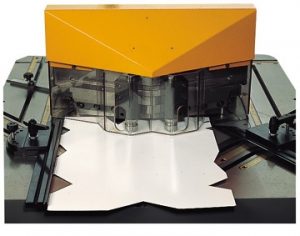
Have you heard of notching? This metalworking process is used extensively to manipulate the size and shape of sheet metal. Notching typically requires the use of a punch press, which is responsible for removing material from the outer edges of a workpiece. To learn more about notching and how it works, keep reading.
Notching Explained
Nothing is a shearing-related metalworking process that involves the use of a punch press to selectively cut unwanted material from the outer edges of a workpiece. After the workpiece is secured in place, the punch press cuts away the unwanted material from its outer edges using a cutting tool. The end result is a smaller workpiece with a different shape.
Types of Notching Processes
There are several different notching processes, each of which uses a different mechanism to remove material from the outer edges of a workpiece. Tube notching, for example, is used on hollow metal workpieces to remove excess and unwanted material, whereas end notching is designed to remove material from one or both ends of a hollow metal workpiece. There’s also side notching, which removes excess material from the side of a tube so that it can be further bent and deformed.
Advantages of Notching
Notching offers a wide range of advantages, one of which is the ability to create complex shapes. The workpiece will take the shape of the punch and die tool set used in the process. Therefore, manufacturing companies can create workpieces in complex and unique shapes by using the right punch and die tool set. If a specific shape is desired, a tool and die set can be created for it.
In addition to supporting complex shapes, notching can be performed on just about any material. Whether a workpiece is made of aluminum, stainless steel, high-carbon steel, titanium or an alloy, it can probably be notched. Some manufacturing companies, in fact, prefer notching over other metalworking processes because of its ability to support a wide range of materials.
Disadvantages of Notching
The biggest disadvantage of notching is its high startup cost. As previously mentioned, this metalworking process requires the use of a punch press. Like other industrial manufacturing machines, punch presses aren’t cheap. The high cost of a punch press, therefore, means companies with tight budgets aren’t able to perform notching. Rather, they must use other metalworking processes to manipulate the size and shape of their workpieces.
